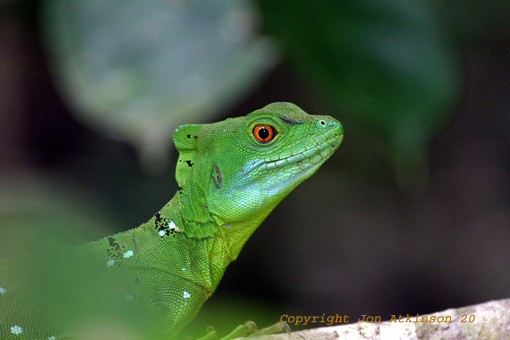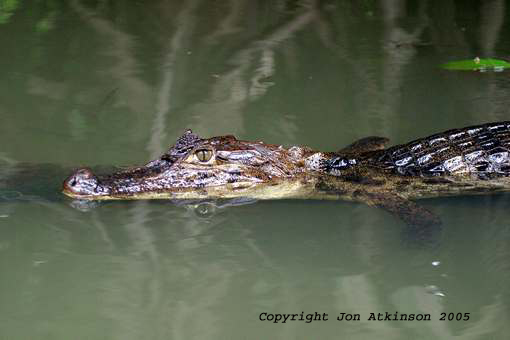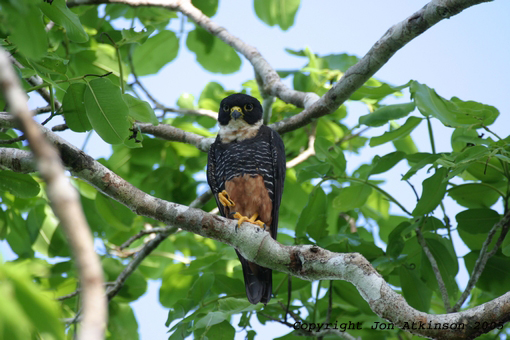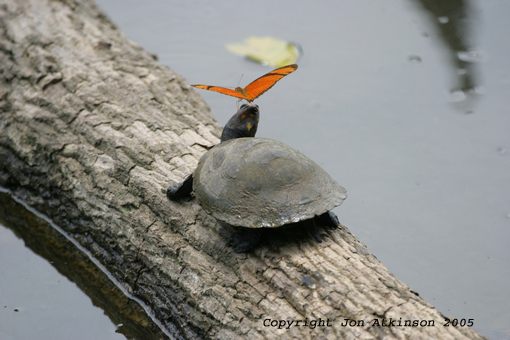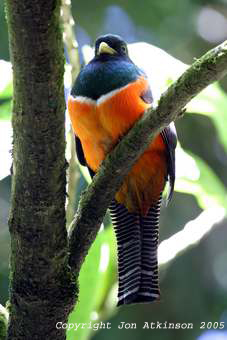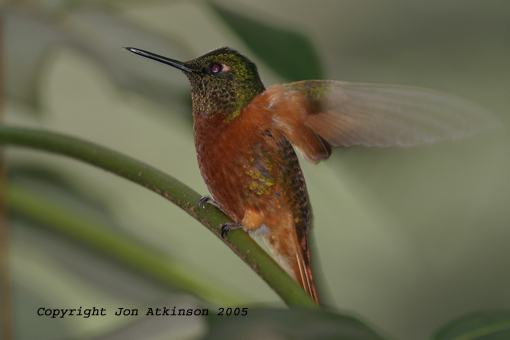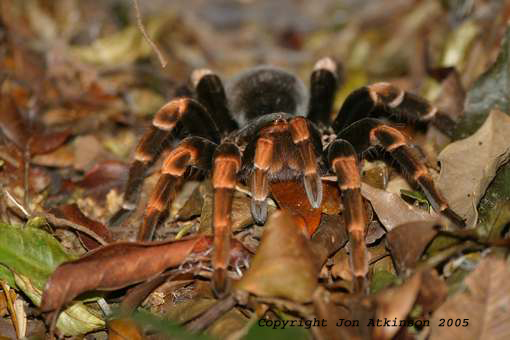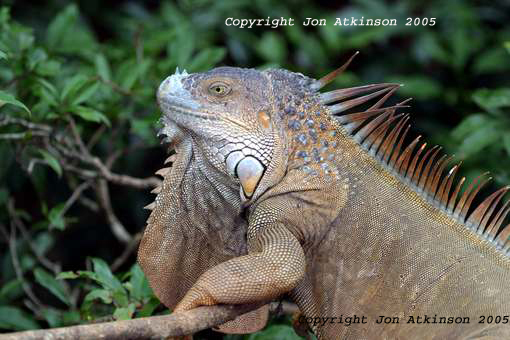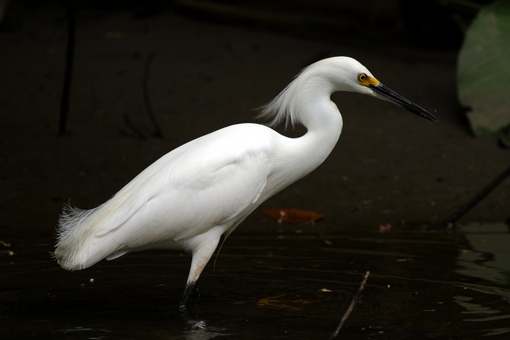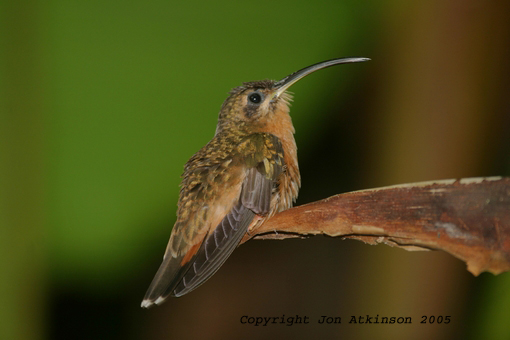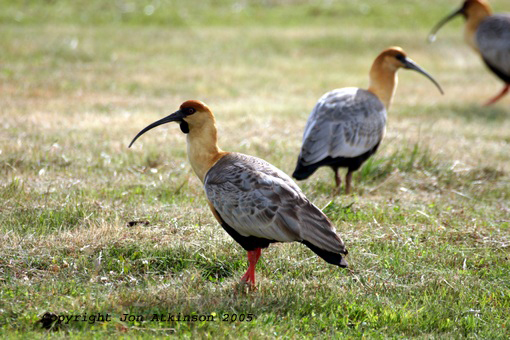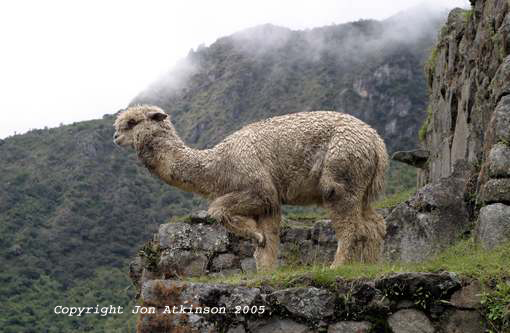South American Wildlife 1 - 'Jesus Christ' Lizzard, Tortuguero N.P., Costa Rica: The common basilisk (Basiliscus basiliscus) is a lizard found in Central and South American rainforests near rivers and streams. The basilisk is part of the corytophanid family. It is also known as the Jesus lizard, Jesus Christ lizard, or lagarto de Jesus Cristo for its ability to run on the surface of water.. |
South American Wildlife 2 - Caiman, back Waters, Costa Rica: Caimans inhabit Central and South America. They are relatively small crocodilians, with the smallest being Cuvier's dwarf caiman (Paleosuchus palpebrosus), which grows to 1 m (3 ft) long, and the largest being the black caiman (Melanosuchus niger), which can grow to 4 m (13 ft) or more. |
South American Wildlife 3 - Bat Falcon, The ARC, Peru: The bat falcon (Falco rufigularis) is a falcon that is a resident breeder in tropical Mexico, Central and South America and Trinidad. They hunt bats, birds and large insects such as dragonflies. The smaller male takes more insects, and the female more birds and bats. The flight is direct and powerful. This falcon is partly crepuscular, as the bats in its diet suggest. |
South American Wildlife 4 - Yellow Spotted Side-necked Turtle: inadvertently attracts a Long-winged Butterfly, which is attracted to the salt from the turtles tears in the Amzzon rainforest in Peru.
| Trogon, Montiverde N.P., Costa Rica: The trogons and quetzals are birds in the order Trogoniformes which contains only one family, the Trogonidae. Trogons are residents of tropical forests worldwide where they feed on insects and fruit, and their broad bills and weak legs reflect their diet and arboreal habits. |
South American Wildlife 6 - Chestnut-breasted Coronet, Agua Calientes, Peru: The chestnut-breasted coronet (Boissonneaua matthewsii) is a species of hummingbird in the Trochilidae family. It is found in humid montane Andean forests in Colombia, Ecuador, and Peru. It is generally easily recognized by its contrasting rufous underparts.
|
South American Wildlife 8 - Iguana, Costa Rica: Iguana is a genus of herbivorous lizards native to tropical areas of Mexico, Central America, and the Caribbean. Iguanas can range from 5 to 6 feet (1.5 to 1.8 m) including their tail. The two species of lizard within the genus Iguana possess a dewlap, a row of spines running down their backs to their tails, and a tiny "third eye" on their heads. |
South American Wildlife 9 - Snowy Egret, Costa Rica: The snowy egret (Egretta thula) is a small white heron. It is the American counterpart to the very similar Old World little egret, which has established a foothold in the Bahamas. |
|
South American Wildlife 10 - Hummingbird, Costa Rica: Hummingbirds are New World birds that constitute the family Trochilidae. They are among the smallest of birds, most species measuring in the 7.5–13 cm (3–5 in) range. Indeed, the smallest extant bird species is a hummingbird, the 5-cm bee hummingbird, weighing less than a U.S. penny (2.5 g).. |
South American Wildlife 11 - Buff Necked Ibis, Argentina: The buff-necked ibis (Theristicus caudatus), also known as the white-throated ibis, is a fairly large ibis found widely in open habitats of eastern and northern South America. |
South American Wildlife 12 - Alapaca, Machu Picchu, Peru: An alpaca (Vicugna pacos) is a domesticated species of South American camelid. It resembles a small llama in appearance. Alpacas are kept in herds that graze on the level heights of the Andes of southern Peru, northern Bolivia, Ecuador, and northern Chile at an altitude of 3,500 m (11,500 ft) to 5,000 m (16,000 ft) above sea level, throughout the year. |

